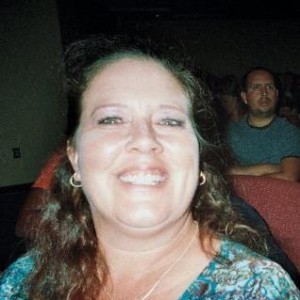How a documentary takes shape
My documentaries have always been stories told by the people who have a particular experience of life.
Nothing is more critical than the interviews with these folks. But the process of turning those hundreds of interviews into a coherent story involves a level of detail most people can’t even imagine.
I am blessed to have an incredible transcriptionist in Shawn Herreras. I send her the audio after an interview and a few days later she sends me back a word for word transcript of everything said.
Shawn has been working with me since I did “Tucson’s Heart and Soul: El Casino Ballroom” in 2012. Our work process has evolved but without her meticulous attention to detail I would be left with the vagaries my limited memory, and truly crappy films would be the result.
Shawn has gone above and beyond to give me a level of detail that should be the model for all doing documentary work. At the top of each page is the name of the person being interviewed at the title of each clip, which is usually a series of random letters and numbers that my camera spits out as I start and stop shooting. At the top of each page she lists how many minutes and seconds into the clip that first passage is. When it comes time to edit, I can quickly find the particular quote I’m looking for and drop it into place.
If there’s a name or term she can’t make out, she highlights it and sends me a note about where it’s located in the total clip. Most times I can fix it without having to go back to the video, but occasionally I do have to find it and correct it, and it’s a breeze because of all she’s done.
Once the transcripts arrive from Shawn on Microsoft Word documents, it’s my turn. On the first pass I go through with a highlighter pen and shade selected passages of interest. I read through everything from a particular interviewee at once. Then I go back and review the highlighted portions, writing what topics they are addressing in the left margin in black ink, and putting stars by the quotes that are most likely to find their way into the film.
Gradually a new document starts to unfold. This one simply lists topics. Under each topic header I list the names of people interviewed who commented on that particular topic, as well as the clip title and page number where it occurs in the transcript. Often a brief synopsis or quote accompanies that note.
Over time, I am able to recognize those topics which are well developed and those that need to be better fleshed out. More interviews may be required, and are scheduled, shot and added to the pool of transcripts until I have the sense that the individual sub-story is ready to be told.
I start to see the potential structure of the overall story telling, and the photos and video clips it will take to propel those story elements. A critical mass is achieved and a first draft of the film starts to take shape.
The interviews go on and on, often until just a few weeks before the premiere, to make sure that everything is accurate and that it is told in the best way possible. Sometimes it takes a phrase to two from one person combined with a few sentences from someone else. But gradually it comes together as a cohesive story– hopefully one people will want to hear and see.
At this point in September of 2013, I am still in the early stages of filming interviews for The Mariachi Miracle, even though I have been taping for months. Most of the focus at this point has been on interviewing older members of the community, both to get the full background of what took place, and to make sure that their stories are recorded. Sometimes you lose sources to death, declining memories, Alzheimer’s, strokes and all sorts of unpredictable factors. But when you’re lucky, that generation sets you straight on many things you hadn’t even considered.
I consider it an honor to record all of the people that I interview for my films. They are the people who lived history, even if sometimes they don’t realize it. Sometimes they are disjointed in how they tell their tales. But collectively they create a body of knowledge that comes closer to the truth than any of us individually could see.
History is human. It involves people, some of whom go on to become famous and some who don’t. But famous or relatively anonymous, they all add to the richness of the world around them.
I want my films to reflect that, and work very hard to make sure that the broadest spectrum of voices is heard. In the process I think you end up with a clearer vision of the history in the making all around us.

